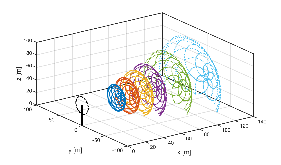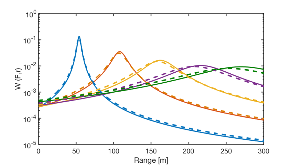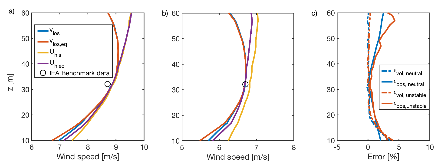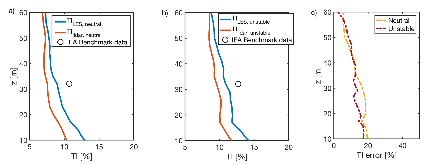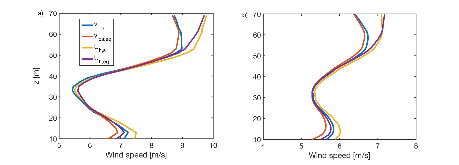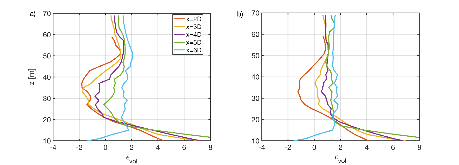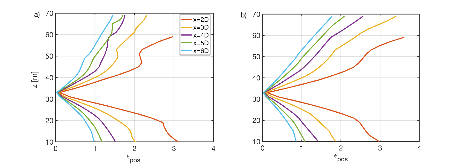Evaluation of Wind Speed Retrieval from Continuous-Wave Lidar Measurements of a Wind Turbine Wake Using Virtual Lidar Techniques
- National Renewable Energy Lab. (NREL), Golden, CO (United States)
- Sandia National Lab. (SNL-NM), Albuquerque, NM (United States)
Wind lidar technology is being extensively used in utility-scale wind turbine wake measurements because of its capabilities to capture the dominant structures of interest in the near-wake region. However, wind lidar devices provide only line-of-sight (LOS) measurements, and retrieval of horizontal wind speed from the LOS measurements of a single lidar in the wind turbine wake could introduce errors due to the assumptions used in the retrieval process. With that in mind, the goals of this paper are to estimate the errors associated with the retrieval processes and provide guidelines for best practices. To achieve these goals, virtual lidar samples are obtained with large-eddy simulations (LES) by sampling the flow field with a model of the Technical University of Denmark (DTU) SpinnerLidar. LES is chosen to simulate the neutral and unstable atmospheric boundary layer (ABL), a benchmark case of the International Energy Agency Wind Technology Collaboration Programme (IEA Wind TCP) Task 31. The precursor ABL simulation is validated with the reference data provided by the IEA Wind Task 31 benchmark case. The data from the precursor simulation is used to drive a simulation of a wind turbine submerged in the ABL. A weighting function is applied to the LES data to mimic the real DTU SpinnerLidar measurements. In the end, the virtual lidar data are processed and compared with the original LES data to estimate the errors. Results show that lidar captures mean ABL profile without any noticeable error, whereas turbulence intensity is underpredicted ~15% at hub height for the neutral case. Volume averaging by the lidar technology has a significant effect in the shear layer of a wind turbine wake.
- Research Organization:
- National Renewable Energy Laboratory (NREL), Golden, CO (United States)
- Sponsoring Organization:
- USDOE Office of Energy Efficiency and Renewable Energy (EERE), Wind and Water Technologies Office (EE-4W)
- Grant/Contract Number:
- AC36-08GO28308
- OSTI ID:
- 1562860
- Report Number(s):
- NREL/JA--5000-73244
- Journal Information:
- Journal of Physics. Conference Series, Journal Name: Journal of Physics. Conference Series Vol. 1256; ISSN 1742-6588
- Publisher:
- IOP PublishingCopyright Statement
- Country of Publication:
- United States
- Language:
- English

